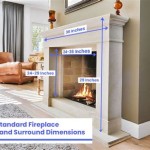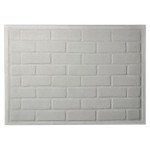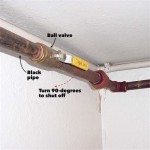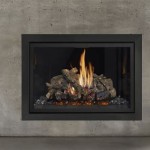Indoor Gas Fireplaces: A Comprehensive Guide
Indoor gas fireplaces offer a convenient and aesthetically pleasing alternative to traditional wood-burning fireplaces. They provide warmth and ambiance with the flip of a switch, eliminating the need for wood chopping, stacking, and ash disposal. This article explores the various aspects of indoor gas fireplaces, including their types, benefits, installation considerations, maintenance requirements, and safety precautions.
A gas fireplace typically consists of a firebox, a gas burner, and decorative elements such as artificial logs, glass beads, or stones. The firebox is the enclosure that houses the flame and protects the surrounding structure from heat. The gas burner is responsible for mixing gas and air to create the flame. The decorative elements enhance the visual appeal of the fireplace, mimicking the look of a real wood fire or offering a more modern aesthetic. The entire system is connected to a gas supply line and requires proper venting to safely exhaust combustion byproducts.
Types of Indoor Gas Fireplaces
Gas fireplaces can be categorized into several types based on their venting system and installation method. Understanding these distinctions is crucial for selecting the appropriate fireplace for a specific space and ensuring safe operation.
Direct Vent Fireplaces: Direct vent fireplaces are the most common and safest type of gas fireplace. They draw combustion air from outside the home and vent exhaust gases directly outside through a sealed system. This sealed system prevents the backdraft of harmful gases into the living space, making them highly efficient and safe. Direct vent fireplaces can be vented horizontally through a wall or vertically through the roof, offering installation flexibility.
Vent-Free (Ventless) Fireplaces: Vent-free fireplaces do not require an external vent. They burn gas very efficiently, producing minimal exhaust gases. These fireplaces are equipped with oxygen depletion sensors (ODS) that shut off the gas supply if carbon monoxide levels become unsafe. While vent-free fireplaces offer ease of installation due to the lack of venting requirements, they are subject to stricter regulations and may not be permitted in all jurisdictions. They also contribute to indoor humidity and can potentially release small amounts of pollutants into the air.
B-Vent Fireplaces: B-vent fireplaces, also known as natural vent fireplaces, utilize the natural draft of a chimney to vent exhaust gases. They draw combustion air from inside the room and require a dedicated chimney or vent pipe that rises vertically through the roof. B-vent fireplaces are less efficient than direct vent models because they draw heated air from the room for combustion, which is then exhausted through the vent. They are typically used as replacements for existing wood-burning fireplaces that already have a chimney.
Gas Inserts: Gas inserts are designed to be installed within an existing wood-burning fireplace. They convert an inefficient fireplace into a more efficient and convenient gas-fueled appliance. Gas inserts are available in direct vent, vent-free, and B-vent models, offering a range of options to suit different chimney and venting configurations. Installation typically involves removing the existing fireplace components and connecting the insert to a gas line and venting system.
Benefits of Indoor Gas Fireplaces
Compared to traditional wood-burning fireplaces, gas fireplaces offer several advantages that make them a popular choice for homeowners seeking warmth and ambiance. These benefits include convenience, efficiency, cleanliness, and safety.
Convenience: Gas fireplaces can be ignited and extinguished with the flip of a switch or the push of a button on a remote control. This eliminates the need for gathering wood, building a fire, and tending to the flames. Many gas fireplaces also feature thermostats that allow for precise temperature control, maintaining a consistent level of warmth in the room. The ease of use makes gas fireplaces ideal for individuals with limited mobility or those who simply prefer a hassle-free heating option.
Efficiency: Gas fireplaces are generally more efficient than wood-burning fireplaces. Direct vent models, in particular, are highly efficient, converting a significant portion of the fuel into usable heat. This reduces energy costs and minimizes environmental impact. Vent-free fireplaces also offer high efficiency, although their overall impact on indoor air quality should be considered. B-vent fireplaces are the least efficient type, as they lose heat through the venting system.
Cleanliness: Gas fireplaces produce no ashes, soot, or creosote, eliminating the mess associated with wood-burning fireplaces. This reduces the need for frequent cleaning and minimizes the risk of chimney fires. Additionally, gas fireplaces do not release particulate matter into the air, improving indoor air quality. The absence of smoke and odors also contributes to a cleaner and more comfortable indoor environment.
Safety: Gas fireplaces are generally safer than wood-burning fireplaces. They are equipped with safety features such as oxygen depletion sensors and shut-off valves that prevent gas leaks and carbon monoxide poisoning. Direct vent fireplaces, in particular, are designed to prevent the backdraft of harmful gases into the living space. With proper installation and maintenance, gas fireplaces offer a safe and reliable heating solution.
Installation and Maintenance Considerations
Proper installation and regular maintenance are essential for ensuring the safe and efficient operation of a gas fireplace. It is crucial to hire a qualified and licensed technician to install the fireplace and to follow the manufacturer's instructions carefully.
Installation: The installation process typically involves connecting the fireplace to a gas line, running the venting system (if required), and securing the fireplace to the wall or floor. A gas line must be installed by a certified plumber and tested for leaks to ensure safe operation. The venting system must be properly sealed and insulated to prevent condensation and ensure proper exhaust flow. The installation should also comply with all local building codes and regulations. A professional installer will be familiar with these requirements and can ensure that the fireplace is installed correctly and safely.
Maintenance: Regular maintenance is crucial for preventing problems and extending the lifespan of a gas fireplace. This includes cleaning the burner, inspecting the venting system, and checking the gas connections for leaks. The burner should be cleaned annually to remove any debris that may be obstructing the gas flow. The venting system should be inspected for obstructions or damage, and any necessary repairs should be made promptly. The gas connections should be checked for leaks using a soap and water solution. If any leaks are detected, the gas supply should be shut off immediately, and a qualified technician should be called to repair the leak. Professional servicing should be performed annually to ensure the fireplace is operating safely and efficiently.
Safety Precautions: It is important to follow certain safety precautions when operating a gas fireplace. Never leave the fireplace unattended while it is in operation. Keep flammable materials away from the fireplace to prevent fires. Ensure that the room is properly ventilated, especially when using a vent-free fireplace. Install carbon monoxide detectors in the home and test them regularly. Educate all household members on the safe operation and maintenance of the gas fireplace.
The selection of a gas fireplace requires careful consideration of factors such as venting requirements, budget, aesthetic preferences, and safety concerns. By understanding the different types of gas fireplaces, their benefits, and the importance of proper installation and maintenance, homeowners can make an informed decision and enjoy the warmth and ambiance of a gas fireplace safely and efficiently.

Majestic Indoor Outdoor Gas Fireplace Twilight Modern

An Indoor Gas Fireplace For The Home Lawn Leisure

Procom 24 In Vented Natural Gas Fireplace Log Set Wan24n 2 The Home Depot

Majestic Indoor Outdoor See Through Gas Fireplace Mezzanine

Empire Tahoe Premium 36 Clean Face Contemporary Direct Vent Gas Fireplace

Empire 29 Loft Small Vent Free Gas Fireplace 10 000 Btu Vflc10in32 Hvacdirect Com

Stellar Transcend Indoor Outdoor Double Sided Gas Fireplace Fireside Hearth Home

Freestanding High Efficiency Direct Vent Gas Fireplaces Inserts Stoves Godby Hearth And Home
:max_bytes(150000):strip_icc()/ventless-gas-fireplaces-4160746-hero-f9d4bdcd9bd446eb84406de306f790ba.jpg?strip=all)
How To Pick Out A Ventless Gas Fireplace

Superior Vre4236 36 Traditional Indoor Outdoor Vent Free Gas Fireplac Us Fireplace
Related Posts








